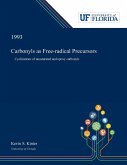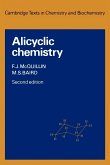This book describes the experience over 25 years of the senior author with the chemistry of organic free radicals. It begins with a mechanistic study of industrial importance on the pyrolysis of chlorinated alkanes. It continues with a theory on the biosynthesis of phenolate derived alkaloids involving phenolate radical coupling. There follows 20 years of practical work to prove the theory correct, especially in the case of morphine alkaloids. The book then describes the work on nitrile photolysis (Barton reaction) which involved the invention of new radical chemistry leading to a simple synthesis of the important hormone, aldosterone. There follows a description of the invention of an important new method for the deoxygenation of biologically important molecules, especially sugars and nucleosides, using radical chemistry applied to thiocarbonyl derivatives. Some years later, in a logical extension to carboxylic acids, another new reaction was invented which provides carbon, nitrogen, oxygen and other radicals under mild conditions. A final chapter summarizes recent applications of thiocarbonyl group derived radical reactions by other authors.
Table of contents:
1. The pyrolysis of chlorinated hydrocarbons; 2. Phenolate radical coupling in synthesis and biosysnthesis; Pummerer's ketone; 3. Nitrite photolysis (the Barton Reaction); 4. Radical deoxygenation(the reaction of Barton and Mc Combie); 5. Disciplined radicals and disciplinary radical reactions (Barton decarboxylation); 6. Some recent synthetic applications of Barton radical methodologies.
This book is about the invention of new chemical reactions for use in the synthesis of biologically and economically important compounds. The reactions invented in the last 20 years are making important contributions to industrial and university research.
This book describes a lifetime devoted to creative chemistry in the service of all mankind.
Hinweis: Dieser Artikel kann nur an eine deutsche Lieferadresse ausgeliefert werden.
Table of contents:
1. The pyrolysis of chlorinated hydrocarbons; 2. Phenolate radical coupling in synthesis and biosysnthesis; Pummerer's ketone; 3. Nitrite photolysis (the Barton Reaction); 4. Radical deoxygenation(the reaction of Barton and Mc Combie); 5. Disciplined radicals and disciplinary radical reactions (Barton decarboxylation); 6. Some recent synthetic applications of Barton radical methodologies.
This book is about the invention of new chemical reactions for use in the synthesis of biologically and economically important compounds. The reactions invented in the last 20 years are making important contributions to industrial and university research.
This book describes a lifetime devoted to creative chemistry in the service of all mankind.
Hinweis: Dieser Artikel kann nur an eine deutsche Lieferadresse ausgeliefert werden.








